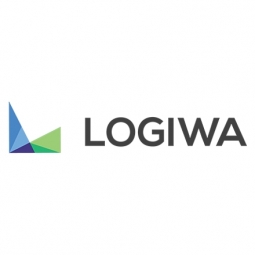下载PDF
Badger Fulfillment Group's Transformation into a Hybrid B2B and DTC Fulfillment Machine with Logiwa's WMS
技术
- 功能应用 - 仓库管理系统 (WMS)
- 基础设施即服务 (IaaS) - 混合云
适用功能
- 采购
- 仓库和库存管理
用例
- 最后一英里交付
- 拣选/分拣/定位
挑战
Badger Fulfillment Group 希望将其 B2B 模式转变为混合运营,其中包括直接面向消费者的订单履行。他们的新仓库需要灵活且可扩展的 WMS。
关于客户
Badger Fulfillment Group 是一家物流公司,于 2018 年在伊利诺伊州哈佛新建了 120,000 平方英尺的仓库。他们希望扩大服务范围,包括直接面向消费者的订单履行。
解决方案
Badger Fulfillment Group 实施了 Logiwa 的云履行平台,该平台提供 B2B、B2C 和 LTL 订单履行的端到端管理。 Logiwa 的直接上架算法和人工智能驱动的拣选和包装有助于简化流程并消除不准确之处。
运营影响
相关案例.

Case Study
DHL Supply Chain Growing Use of AR Glasses
A picker with an RF scanner is constantly looking at the gun to get pick commands, hitting the confirm button and doing things in sequential fashion which is time consuming. Warehouse operations costs add up to 20% of the total logistics costs for DHL.
Case Study
AstraZeneca Enhances Product Traceability with Honeywell Forge
AstraZeneca, a global biopharmaceutical business, was faced with the challenge of complying with an increasing number of country-specific regulations that required products to be traceable throughout the supply chain. This necessitated changes in existing warehouse processes and the provision of equipment to warehouse and production staff to efficiently record product movement down to the sales pack. AstraZeneca also aimed to provide inspectors and sales representatives with the means to verify product status directly in the field. A significant concern was the potential impact of a single centralized database on the performance of scanning devices used in the warehouse, with an instantaneous response being a key requirement. Accuracy and the ability to verify material batch quantities against outbound SAP deliveries were also crucial.

Case Study
Hess Corporation's Productivity and Operational Efficiency Improvement with mInventory
Hess Corporation, a global energy producer, was in need of a materials management technology that could enhance accuracy and efficiency across their entire supply chain. This included connectivity to onshore warehouses and yards, as well as remote locations such as ships and offshore platforms. The company was keen on transitioning to paperless operations and required a system that was user-friendly and adaptable to minor configuration changes as per business needs.

Case Study
Increasing Profitability through IoT: A Case Study on Whitaker Oil Company
Whitaker Oil, a fourth-generation, family-owned chemical and composite materials distributor, was facing a significant challenge in managing its complex enterprise. With multiple companies and facilities under its umbrella, the company needed a business software solution that could help them manage and measure profitability at the transaction level. The solution needed to be specifically designed for the chemical industry, considering the unique requirements and challenges of this sector. The company was looking for a solution that could capture every transaction, manage complex batching and blending, inventory management, purchasing, safety, price management, order entry, invoicing, and financial statements.

Case Study
Asia Airfreight Terminal Enhances Operational Efficiency with CommScope's RUCKUS Solutions
Asia Airfreight Terminal (AAT), a leading cargo handling company based out of Hong Kong International Airport, was facing challenges with its Wi-Fi network, which was critical for the functioning of its automated Material Handling System (MHS) within the warehouse. Any interference or lost signals could directly impact their operational efficiency. AAT also had separate networks for their office and CCTV cameras, which made the job of their data center challenging. The company was in search of a Wi-Fi network configuration that could streamline their networks and reduce its network management workload. AAT was already running on equipment from a competing vendor, and the new solution needed to prove its worth in scalability and reliability.

Case Study
Bayernwerk AG's Cloud-Based Integration Platform for Enhanced Services and Reduced Time to Market
Bayernwerk AG, a subsidiary of global energy leader E.ON, operates one of the largest electricity and gas distribution networks in Germany. The company aimed to create innovative business systems to better utilize existing assets and deliver new digital services faster to members and third-party organizations in the energy industry. However, Bayernwerk AG faced significant gaps in its legacy platforms and was challenged with figuring out the best ways to use existing grid services to develop new products and services. The company also aimed to improve the customer experience and the reusability of its assets and software systems. A primary goal of the digital transformation was to change the role of IT to enable business innovation and foster growth.





